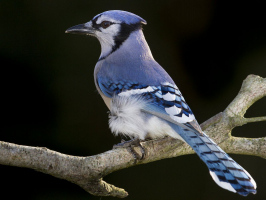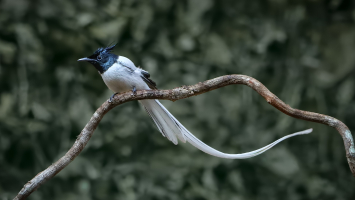Top 10 Most Beautiful Birds In Brazil's Atlantic Forest
A staggering variety of birds can be found in the Atlantic Forest in southeast Brazil. This wooded region along Brazil's coast, which is 1,500 square miles ... read more...(3885 square kilometers) in size and home to 900 bird species, accounts for roughly 45% of the country's total bird species. You won't find such vibrant, colorful, and unusual bird species anywhere else on the globe. Here is a list of the most beautiful birds in Brazil's Atlantic Forest, let's find out!
-
The Saffron Toucanet is known in Portuguese as Araçaribanana, or “Banana Toucanet”. This species is dimorphic, which means that the men and females differ in appearance. The adult male has a red rump, an olive mantle (which includes the wings, shoulder feathers, and back), and a golden head and breast. They have a small bill that is green, grey blue, and yellowish-grey in hue. Adult females resemble adult males except that they have shorter bills and more olive-colored plumage than gold. A young toucanet has a blotchy bill and is primarily olive and grey in color. It also has brown eyes. It can make a range of vocalizations, including loud notes, rattle-like cries, and purring noises.
These birds consume fruit, just like other toucans, but they also take small animals and other birds' eggs for food. They typically build their nests in old woodpecker burrows or other tree cavities. Saffron Toucanets' ability to survive is threatened by habitat degradation, poaching, and its own beauty, which attracts illicit capture for the cage bird trade.
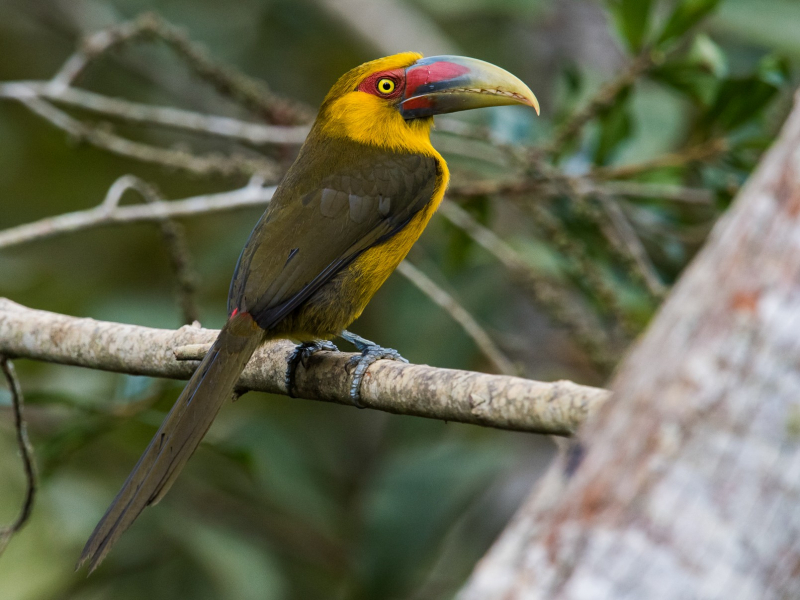
eBird 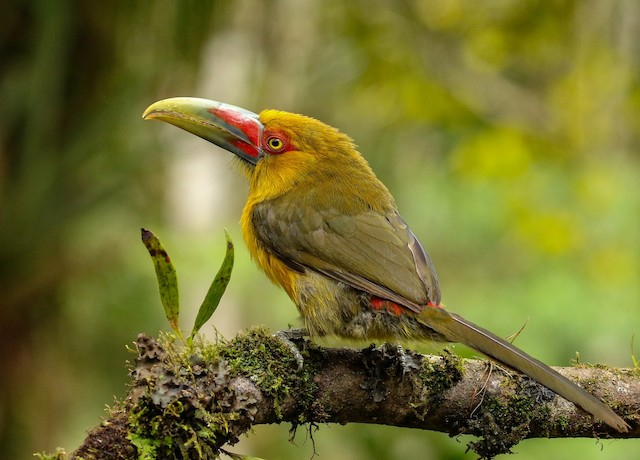
eBird -
The Banded Cotinga (Cotinga maculata) is a species of bird in the family Cotingidae. It is endemic to southeastern Brazil. Male birds are a vivid blue color with black spots on their backs and are around 20 cm long. With a blue stripe across the chest, the throat and belly are a vivid purple color. Females have some white mottling and are a dull brown color. The primaries are modified to produce a slight whir during display.
The life histories of the seven species of birds that make up the genus Cotinga, which also includes the Lovely and Spangled Cotingas, are sadly poorly understood. They are modest, unassuming birds that live in the upper reaches of the forest canopy, despite the fact that many of them have spectacular colors. In addition to perhaps eating seeds and insects, they may also eat the fruit there. Similar to other colorful birds, Banded Cotingas are frequently captured for the cage bird trade, which, along with deforestation, is one of the main factors contributing to their sharp decrease. According to the IUCN, it is considered endangered.
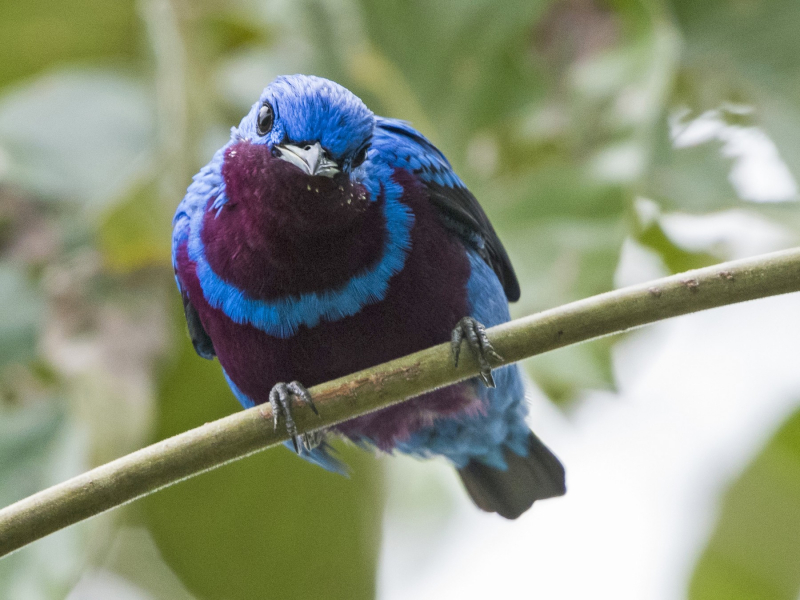
eBird 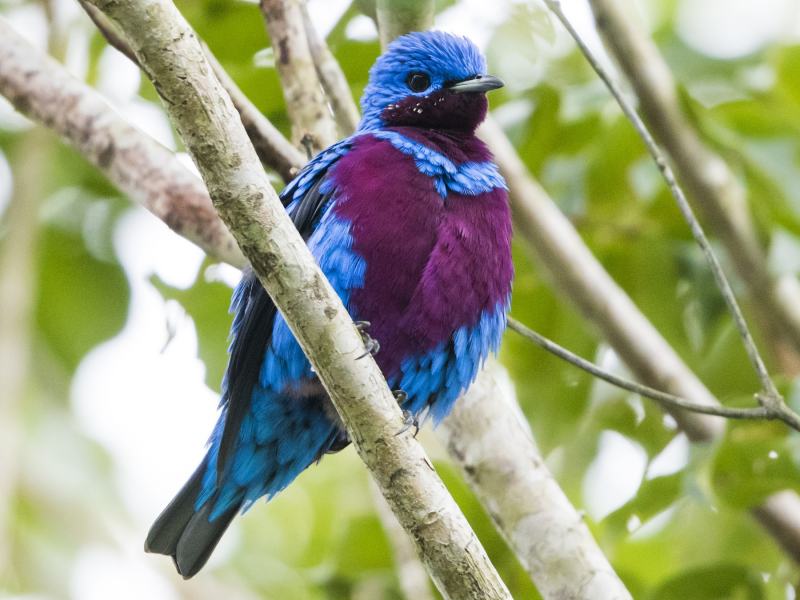
eBird -
The Black-Headed Berryeater, as its name suggests, mostly consumes fruit; in fact, watching the birds frantically feed at fruiting trees is one of the greatest methods to discover this species. Green and yellow with red iris, bodies are mostly black and olive. They have short dark bills. It contributes significantly to the ecological community by disseminating fruit seeds, just like other cotinga family members.
Another effective technique to find this unusual species is to listen for the sound of the Black-headed Berryeater, which consists of a single note followed by a descending whistle repeated at regular intervals. It shares a close relationship with the Hooded Berryeater, another endemic of the Atlantic Forest, but prefers higher elevations and faces more threats. The Black-headed Berryeater is considered vulnerable by the IUCN because of its small and dispersed population.
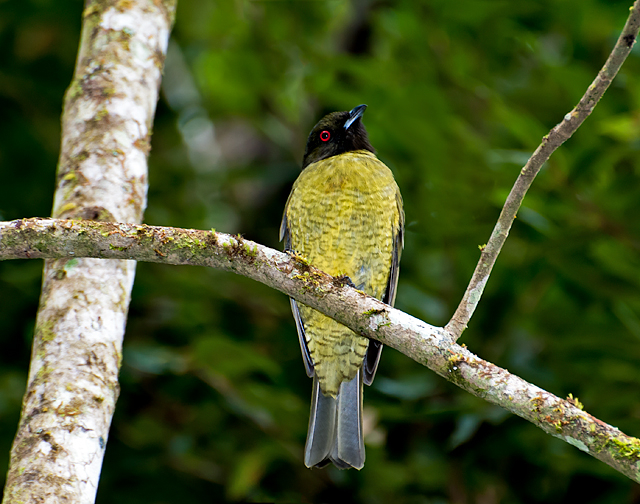
Wikipedia 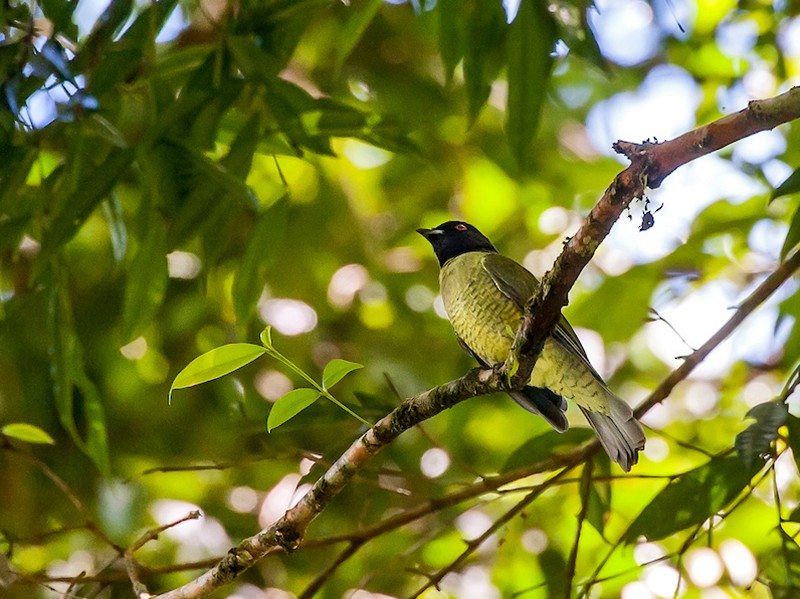
eBird -
The Striated Softtail (Thripophaga macroura) is a species of bird in the family Furnariidae. It is endemic to eastern Brazil. It is a distinctive-looking rufous bird with an orange chin patch, strongly streaked plumage, and a fiery cinnamon tail. Its natural habitats are subtropical or tropical moist lowland forest and subtropical or tropical moist montane forest. It is threatened by habitat loss.
The Striated Softtail typically hunts for insects in tangled vines alone or in pairs, at the lower and medium levels of humid woodland. The likelihood of seeing the birds increases in woods with extensive vine growth. The bird occasionally joins mixed-species flocks of other insect-eating birds, such as woodcreepers, antshrikes, and antbirds, for protection and the possibility to catch more prey.
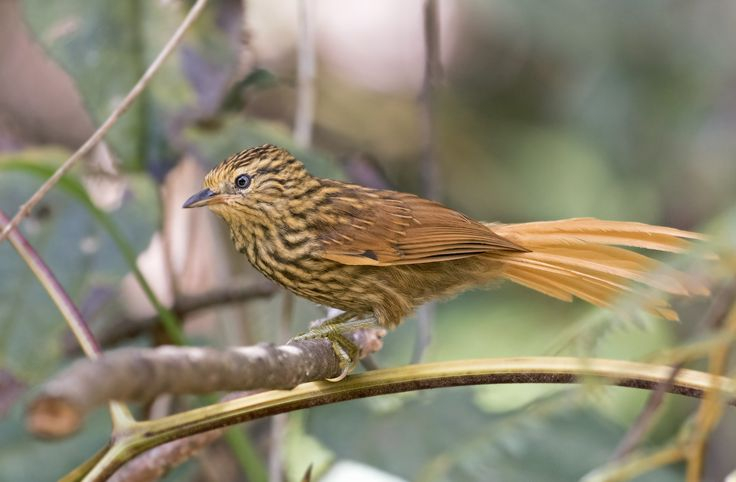
Pinterest 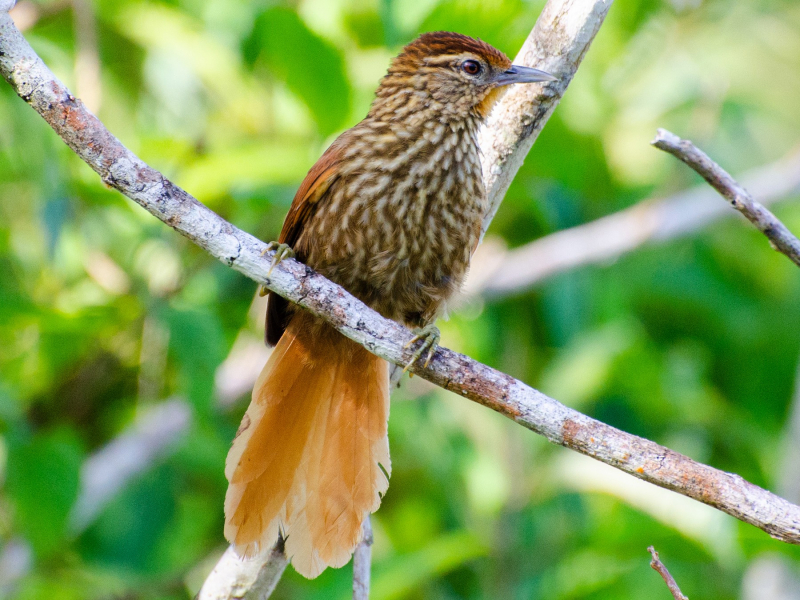
eBird -
The Fork-tailed Tody-Tyrant, a tiny flycatcher with a striking pattern, lurks in the underbrush of forest boundaries, especially in areas with thickets of bamboo and vines. Even though it can survive in damaged forests, the species is rare, with probably less than 10,000 individuals.
Like other flycatchers, it consumes insects such as tiny caterpillars and katydids that are caught in leaves during the brief, energetic flights of the birds. The bird calls in a staccato, high-pitched pattern that is typically repeated three times. Other facets of the behavior and biology of the breeding process of the bird are yet unknown to scientists. According to rates of habitat degradation within its range, it is believed that the Fork-tailed Pygmy-Tyrant is disappearing quickly. It is another Atlantic Forest endemic that the IUCN has classified as Vulnerable due to extensive, ongoing habitat loss.
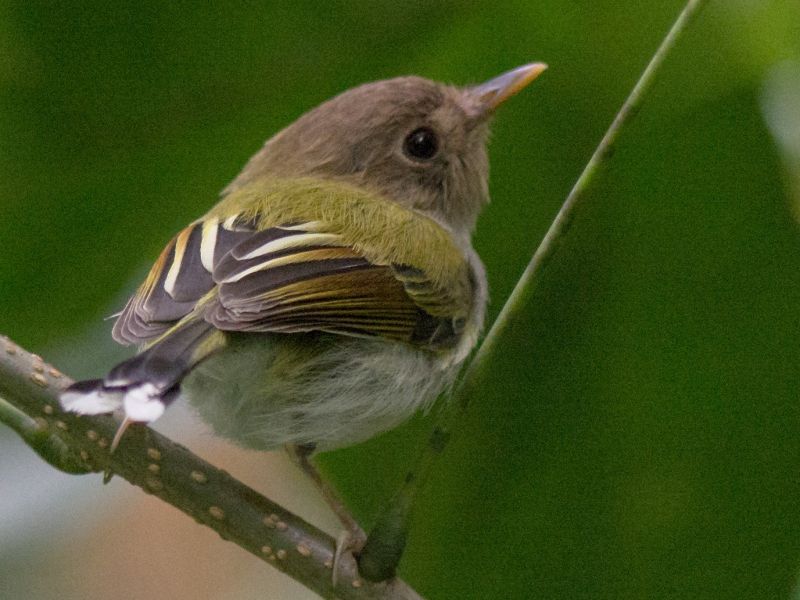
eBird 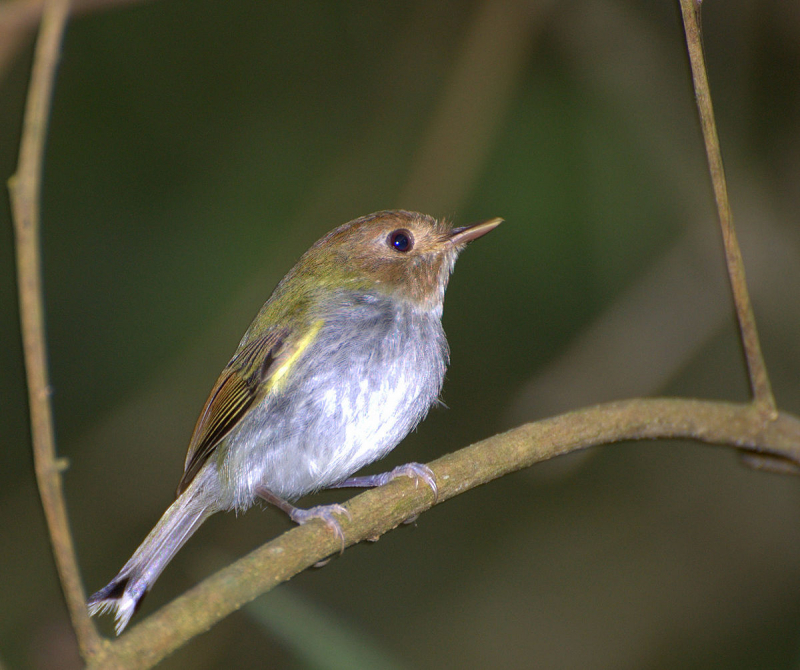
Wikipedia -
A sizable group of hummingbirds known as hermits includes 30 to 40 different species and can be found from southern Mexico to northern Argentina. One of the rarest is the Hook-billed Hermit. The species is listed as Endangered by IUCN because there may only be 200 to 300 left in the severely damaged Atlantic Forest. Its underparts are cinnamon, and its upperparts are a greenish bronze color. The face is dark with a white supercilium and "moustache". The tail's outer feathers have white tips and are shiny copper in color. Bill is almost straight. The underparts of the female are a little bit paler than those of the male, but otherwise, the sexes have similar plumage.
The Hook-billed prefers moist woodland interiors near bodies of water, especially streams that are surrounded by the vividly colored blooms of Heliconia plants, which is crucial in pollination. Roads and human development have dispersed the forest and produced fragmentation, which has resulted in dangerous population decreases for the Hook-billed Hermit.
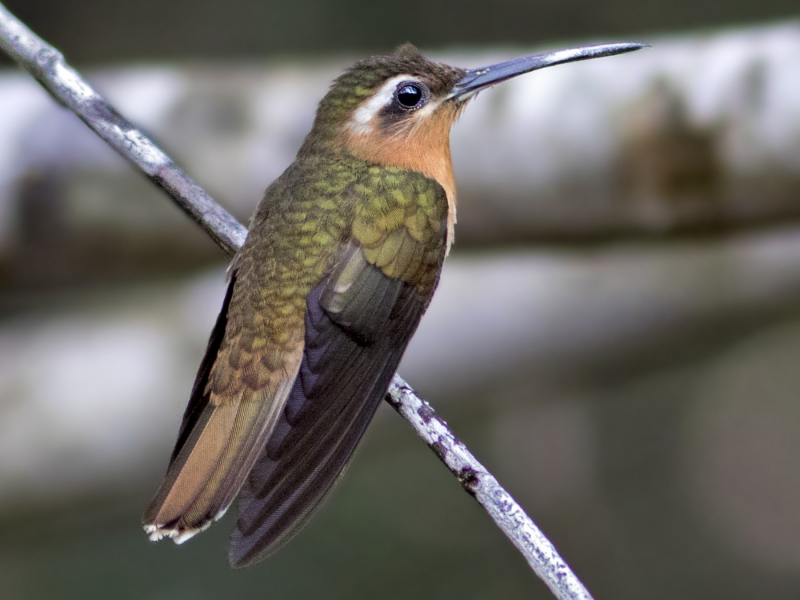
eBird 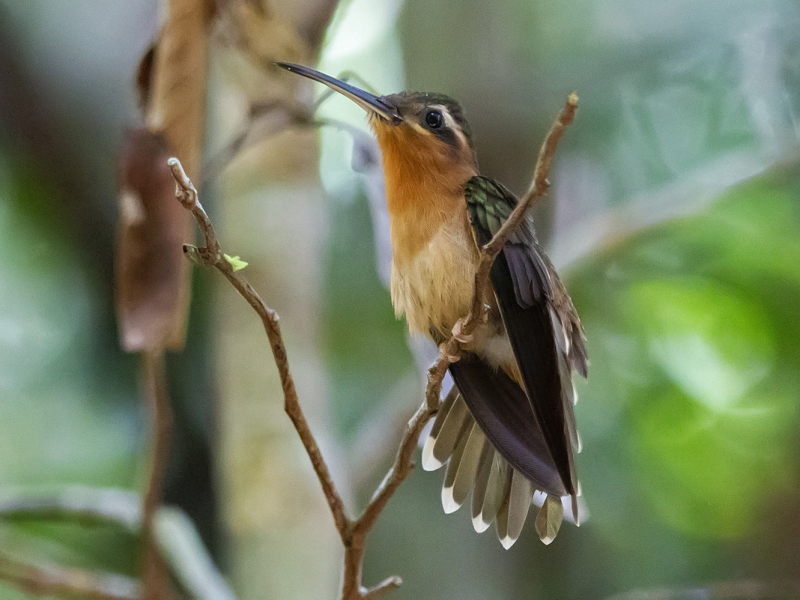
eBird -
The Pin-Tailed Manakin (Ilicura militaris) is a suboscine species of bird within the manakin family, Pipridae. This species is endemic to the Eastern coast of Brazil within the humid Atlantic Forest, and its range extends from the State of Bahia to the State of Rio Grande Do Sul. The birds are hard to spot, in part because of their relatively low vocalizations, despite the male's brilliant green, red, and black plumage standing out.
The Pin-tailed Manakin is sexually dimorphic, like the majority of manakins, with the colorful male outshining the bland, greenish female. The species' large, pointed middle tail feathers are present in both sexes. Male manakins are noted for their elaborate courtship rituals performed in groups. These frequently occur at leks, which are gathering places where females congregate to find a mate.
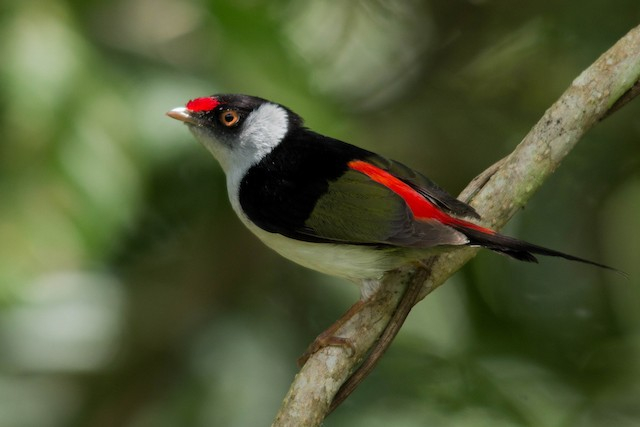
eBird 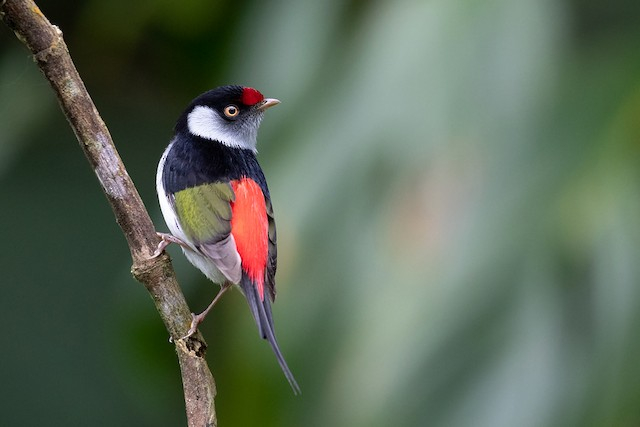
eBird -
The Maroon-Faced Parakeet (Pyrrhura leucotis) is a small parrot belonging to the genus Pyrrhura. It is unique to Brazil's eastern Atlantic Forest. Prior to recent research, the Venezuelan, Grey-breasted, and Pfrimer's parakeets were considered subspecies of this bird.
It measures 21 to 22 centimeters long. Most of the feathers are green. The rump and belly are maroon, while the breast has dark grey and whitish scaling on a green backdrop. The forehead is bluish, the cheeks and throat are dark maroons, and there is a whitish ear patch. The underside of the lengthy, graded tail is red. A harsh sound that is repeated three or four times is made by the bird. Maroon-faced Parakeets build their nests in tree cavities that are primarily used by other bird species, including woodpeckers. They are social birds that are frequently observed in groups of 15 to 20 birds outside of the breeding season.
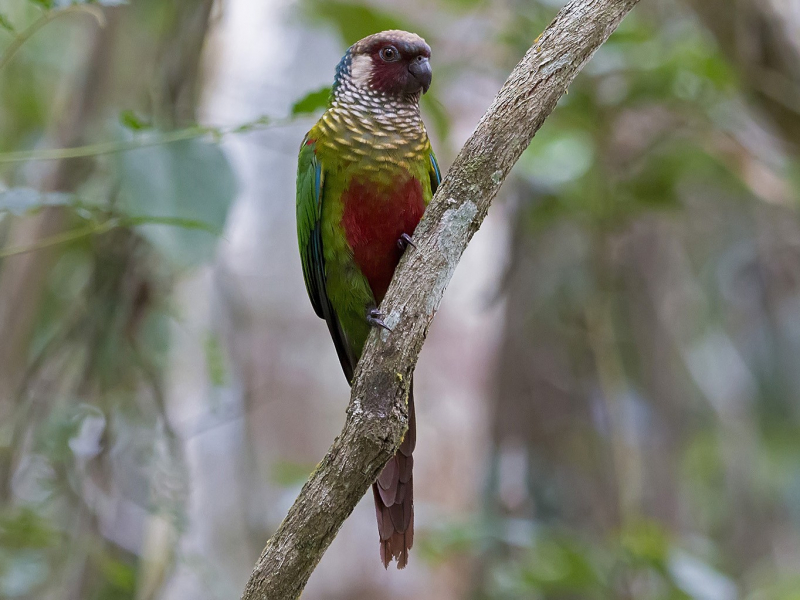
eBird 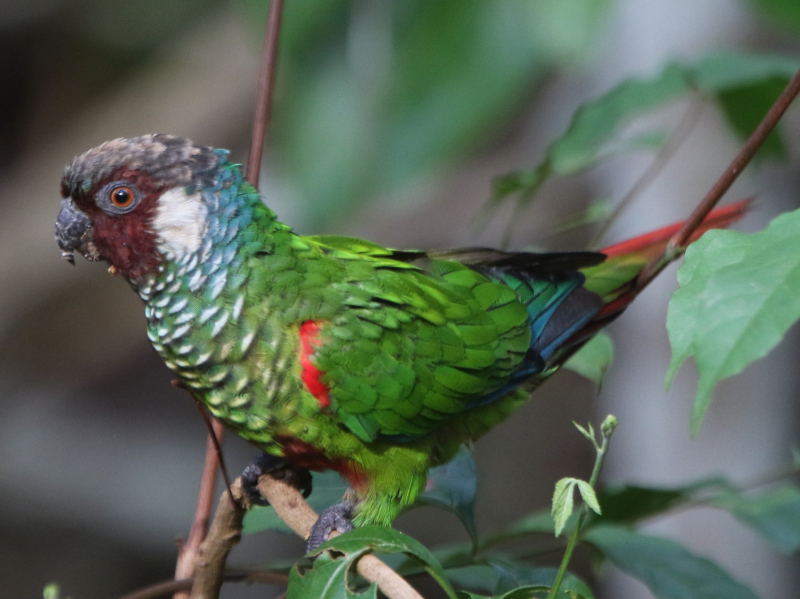
eBird -
One of the loudest birds in the world is the male Bare-Throated Bellbird. Argentina, Brazil, and Paraguay all have moist subtropical and tropical forests where they can be found. The male has bristly bluish-black exposed skin around its eye, beak, and throat, and white plumage. The female is more uninspiring; she has olive-brown upperparts and yellow underparts with streaking. The male produces one of the loudest bird calls ever recorded, which sounds metallic and reminiscent of a hammer hitting an anvil. This bird consumes fruit and assists in spreading forest tree seeds.
Although this behavior tends to vary among populations, this species appears to migrate in at least some areas, including southeast Brazil. The International Union for Conservation of Nature (IUCN) has listed the Bare-throated Bellbird as Vulnerable to extinction due to habitat degradation and the pet bird trade.
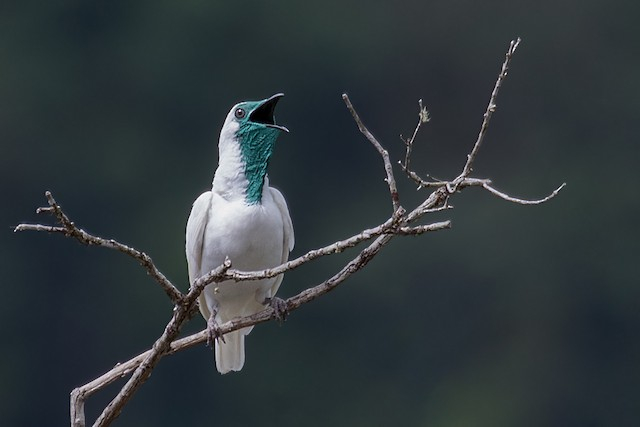
eBird 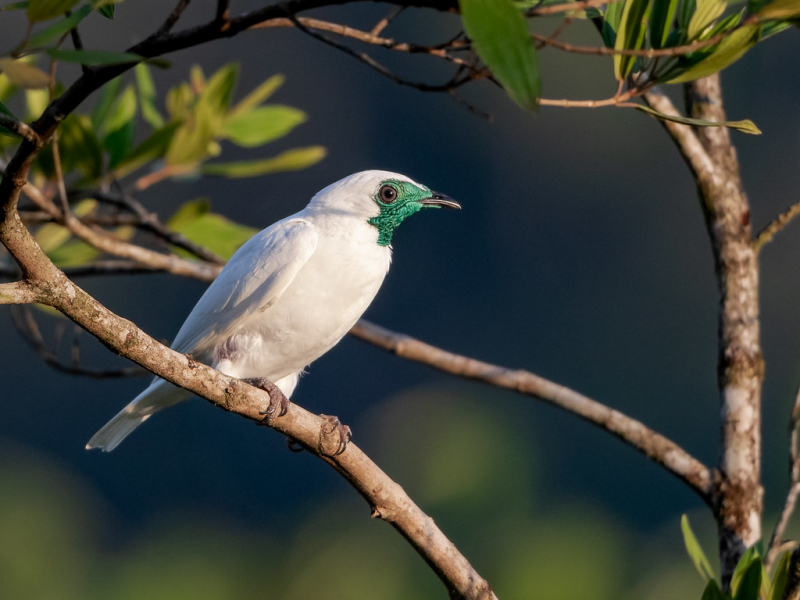
Flickr -
The Three-Toed Jacamar (Jacamaralcyon tridactyla) is a species of bird in the family Galbulidae. It is monotypic within the genus Jacamaralcyon. It is endemic to Brazil. The males and females have identical plumage, which is slaty black above with a bronzy-green gloss and slightly paler below. The breast's middle and belly are both white. The cap, chin, and sides of the head are finely marked with pale fulvous streaks, while the adult has a brownish-gray cap and a black neck. Its feet are slaty gray, and its bill is black. The three-toed jacamar has three toes instead of four like other members of its family. Its tiny zygodactyl feet lack a hind toe, and the bases of the front two toes are fused together.
With its long, narrow bill, this species effectively captures butterflies, dragonflies, and wasps to eat. The females of the birds often dig the nesting burrows in an earthen bank. The IUCN classifies this species as Vulnerable because it is experiencing a significant loss despite its ability to survive in some habitat that has been damaged.
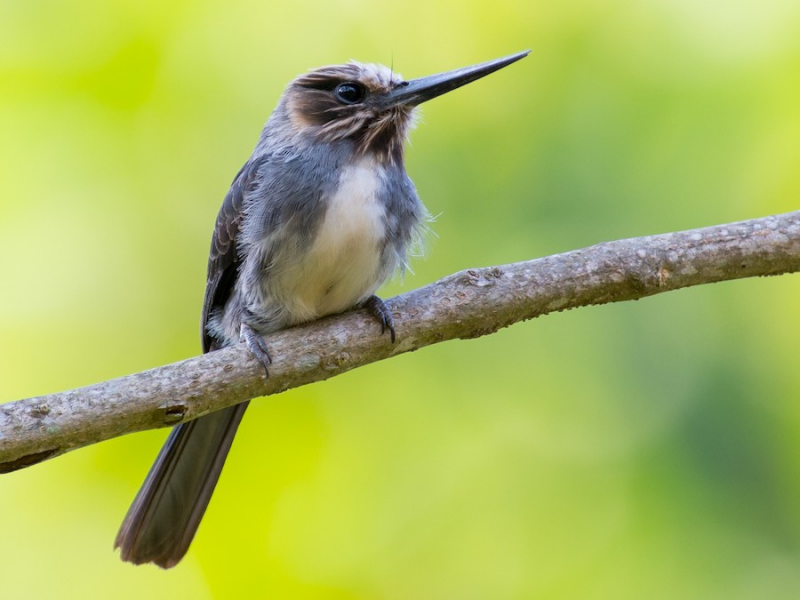
eBird 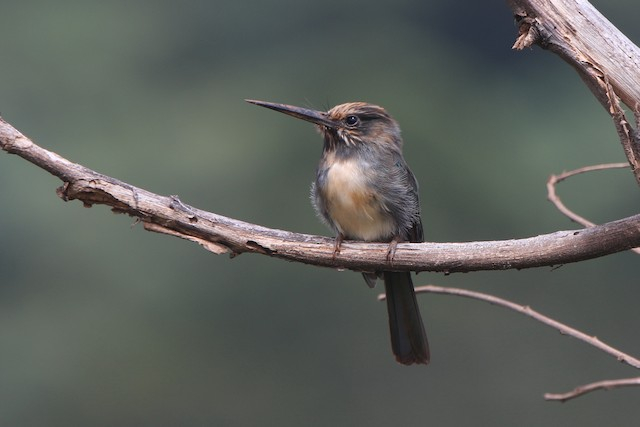
eBird












